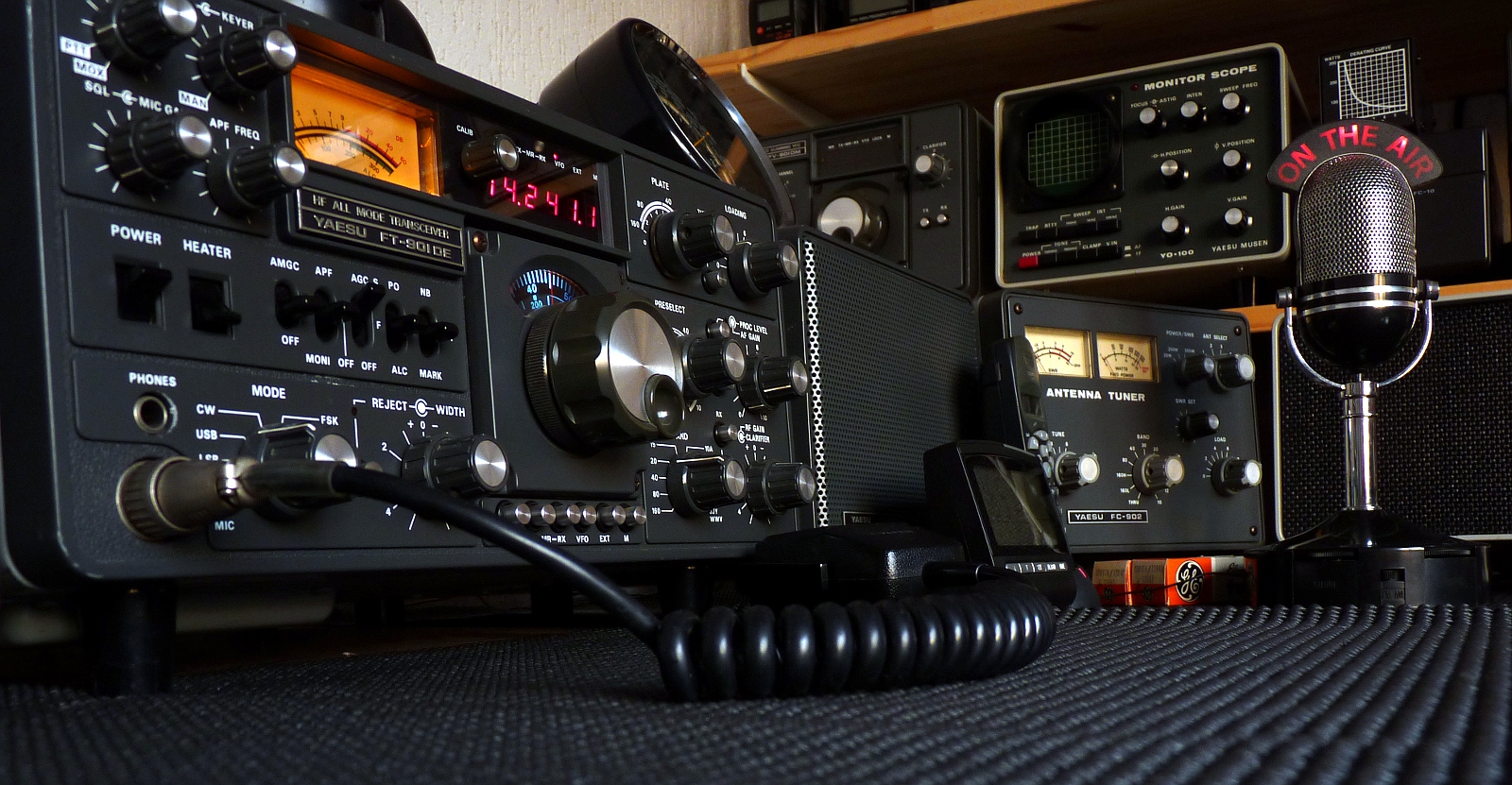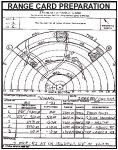Amateur Radio Operators (“hams”) have a tradition of public service. Indeed, the FCC rules, section 97.1 (a) states one of the purposes of Amateur Radio is: “Recognition and enhancement of the value of the amateur service to the public as a voluntary noncommercial communication service, particularly with respect to providing emergency communications.”
Commonly, that public service is rather mundane, providing communication support for, by way of examples, the Boston Marathon, Michigan’s Consumer’s Energy AuSable Canoe Marathon, and the annual Marine Corps Marathon which starts and ends in Arlington, Virginia.
Commonly, hams interact with other, non-ham folks, as in the AuSable Canoe Marathon, where race officials receive time reports from several designated timing stations. In rural Michigan, as exemplified by some reaches of the AuSable River valley, cellular phone service is either spotty or absent.
Prepare (and Pack) For Contingencies
In preparing for a public service event, occasionally things not commonly encountered enter into your planning. First off, what are you expected to do? Are you simply going to be passing traffic you get from the event staff, will you also be part of the shelter staff, will there be the potential of injuries or emergencies (and, if so, what sort might you anticipate?) If there are emergencies or injuries, what do you expect that your role will be? What sort of arrangements have event staff made for those emergencies/injuries?
How long will you be on duty? A morning on a walkathon might present different needs for you and whoever else is in your group, than would be for a day-long, or overnight, assignment.
What sort of support will be available at your assigned position? If there is AC power that you can use, along with bathrooms, shelter from the weather, and potable water, you face different challenges than if you are 25 miles down a snowy trail, with whatever you brought along for sustenance, shelter, and so forth.
To be well-prepared, I tend to plan on being there around 1.5 times as long as I was told. Therefore, I pack food, water, meds taken regularly, a chair, a canopy for shade, change(s) of clothing, and supplemental clothing according to season. (rain gear, cold weather clothing, change of socks, warm hat, gloves/mittens, sun hat, sunglasses, and so forth. At some point, it appears that I’m preparing for a camping trip.)
I also always bring my medic bag. I started out as a medic, and several times have been happy that I had it handy.
Since it is likely that, as a ham, you are there for communications, it is reasonable to anticipate that you might have to communicate such items as a need for supplies at your assigned station.
You do know how to identify your location, for your net control (or other party who you may need to communicate with), right?
One Experience
A true story: One autumn weekend, my family and I were camping in an undeveloped site at a state park. We started off alone, but later on, several carloads of young adults arrived and set up their camp. Post-adolescent high spirits followed, which led to, it appeared, hard feelings. One of the party appeared to think it was wise to remove a mirror from one of the vehicles, evidently not his own, as the owner attempted to redirect the gentleman. Loud voices and exchange of blows followed, and my wife determined that this was a good time for the local police to get involved.
Fortunately, among our set-up-camp routine maneuvers, is to make a placard featuring our campground name, campsite number, and dates of our stay. That is useful information for a 911 dispatcher, attempting to send the police and the DNR staff to the scene of our neighboring donnybrook!
If you are at an urban location, a street address likely will be entirely satisfactory for dispatch. But, if you are down some trail, or at some bridge crossing the AuSable River, that address thing might not be particularly helpful.
The Range Card Method
In the military, there is a process known as “preparing a range card”. The part I want to pass along, is that a rough sketch map of your location, with bearing and range to prominent terrain features may provide the Coast Guard, or National Guard chopper pilot with adequate directions to your location. Similarly, in very rural locations, where EMS and Fire get run information, which occasionally sounds like”Go about a half a mile North along the second trail west of Metzenberger’s farm”, that might be really, really useful, if you (or one of the participants) need EMS, or fire, or, really, nearly any sort of time-sensitive assistance.
Notice how in this public domain example (found on a U.S. Army curriculum web site) the trooper sketched in roads/trails, a hilltop, a woodlot and a building? With the distance (those arced lines) and bearing (identified by compass at the time of the sketch), you can describe prominent terrain features and their relation to your own position. If you are in an area without well signed cross streets, well, that sort of information may prove lifesaving. Any medic I know will love “500 meters up the third northbound dirt road west of the entrance to the state park, off of highway 2”, rather than “the group campground, uh, to the right”.
Another of the “get your communications mind right, before you key up” tasks, once you are able to describe where you require assistance, is the ability to clearly communicate what sort of assistance you require, and with what urgency. Again, the military has something we can use as a starting point, called a “9 line medevac request”.
Transliterated into our civilian setting, line 1 is where you are located (or, where the assistance is required). We spoke of that, above.
Line 2 will in all likelihood be your callsign, as well as your tactical call (for example, “Stephan’s Bridge”, or “Wetmore check station”.
If net control assigns you a different frequency on which to operate for your request, write it down. Somewhere you can find it. Legibly. (ask me how I know this.)
Line 3 is both a statement of how urgent your need is, followed by a statement of your need. If an injury or emergency, our firefighting neighbors have what they call a size up. In my rural county, occasionally EMS is first on the scene, and they provide a size up. It can sound something like “Medic 103 on scene, single sedan, on it’s side, it is smoking, two civilians up and walking, two down on the ground. No flames visible. No second vehicle.” For our purposes, it might sound like “Request EMS for an ankle injury, subject is awake, alert, talking, breathing normally.”
If you are asking for replenishment of water for the participants, a “routine” priority, followed by something like “4 flats of water requested” might be all that is required.
Line 4: any special equipment required? Describe.
Line 5: How is the location marked? Something like “Yellow van at the back of the school parking lot”. Another iteration might be something like, “follow the woman with the yellow shirt. She will meet you at the road, and lead you in.”
You Might Save Lives
If you are volunteering for something other than a walkathon, then pre-planning both how to get into your assigned position, as well as how to egress same, may be handy. Perhaps lifesaving. If you are taking a shift at a shelter, because the neighboring county has a forest fire, have you considered the possibility that the neighbors forest fire, might become your forest fire? Do you have a plan if such becomes the case? And, an alternate plan when that exit plan becomes unworkable? And a contingent plan, for when that secondary plan fails? Do you have an emergency plan, when your primary, secondary and tertiary plans all fail? Because, if you only have the one plan, contemplate the potential that every other soul in your locality has that very same plan, and they will, every one of them, pack themselves into an immobile mass at some critical overpass, or bridge, or intersection, and you will be on this side of that mass, when trouble is, also, looming from THIS side of the jam. And, your plan had you on that side of things.
Oops! Avoid such mistakes.
The final thought, regarding all the above, is to write it down. Keep that written plan (perhaps in several laminated copies) where you can find it. Because, I will bet you that, unless ice water runs through your veins (it does not run through mine!), when you suddenly realize that you have to act, or very bad things will get very much worse, you will not have a linear thought in your head.
Consider what sort of bad things they might be. Plan for them. Write that plan down. Keep it where you can find it.
About The Author
Reltney McFee holds a General class ham license, and is a Mid Level provider in a clinic in Fly Over Country. He has been an Emergency Department RN for 30+ years, an EMT for a Large City Fire department, and has volunteered at different rural fire department rescue services.











